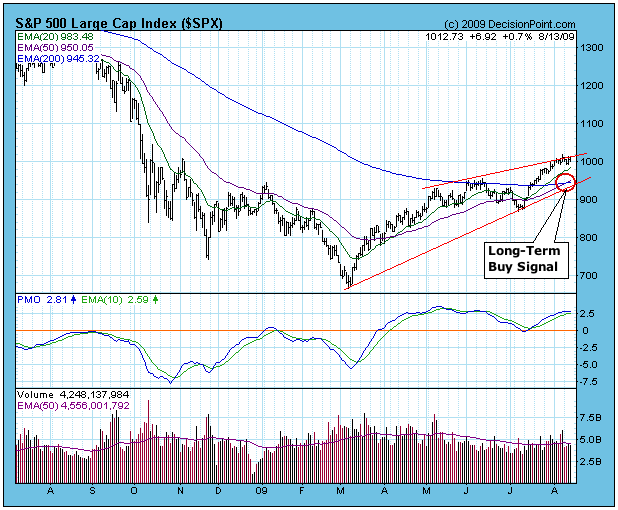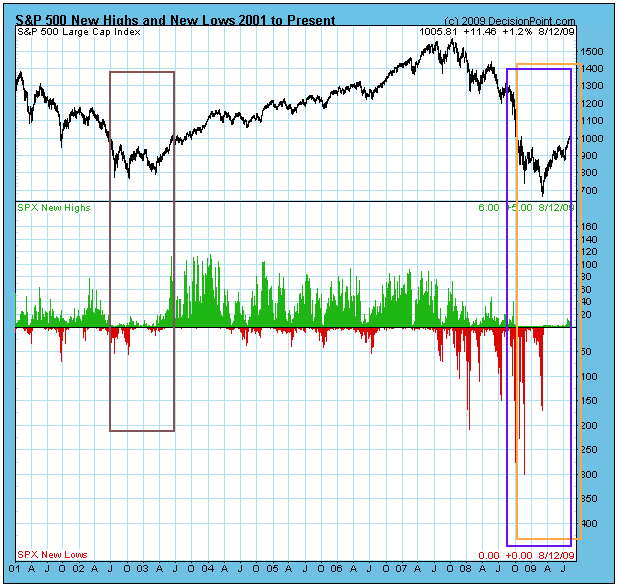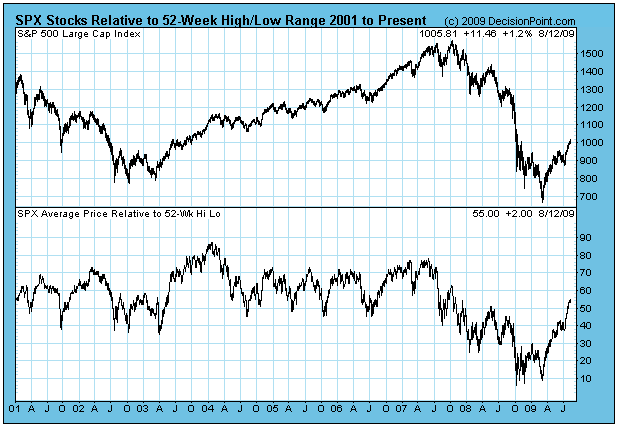On Tuesday of this week our long-term model for the S&P 500 switched from a sell to a buy signal. While it is a simple model -- the signals are generated by the 50-EMA crossing over the 200-EMA -- it can also be very effective, capturing a gain of 28.7% over a period of 580 calendar days. During that period the S&P 500 lost -28.5%. Past performance is no guarantee of future results. In fact, like any trend following model it is subject to whipsaw, and will be unprofitable in some cases. It probably will not be fast enough to sidestep to sidestep a surprise crash, such as we had in 1987.
In fact, my recommendation regarding this signal is to use it as an information flag rather than an action flag. For example, we use the long-term signals to determine whether or not the market is in a bull phase or a bear phase. As of Tuesday we consider that we are in a bull market, and this is the long-term context within which we will interpret medium-term price action and technical indicators. Bull market rules apply. The market will tend to stay overbought, and, while overbought conditions require increased caution, they are not necessarily selling opportunities in a bull market.
Prices are still pressing the top of an ascending wedge formation. A pullback is possible, but I think, if it happens, it will be quick.
While price action and indicators continue to confirm our bull market assumptions, one indicator that is not confirming is 52-Week New Highs -- they are hardly expanding at all. I was concerned about this until I looked a little deeper into the matter. On the chart below I have drawn a brown rectangle to encompass the 52-week period in 2002-2003 preceeding and including the expansion of new highs that accompanied the initial breakout of the bull market. Note that the vertical price range inside the rectangle is about 250 points.
Now look at the price range inside the purple rectangle, which encompasses the current 52-week period for measuring new highs. It ranges from 1300 to 680, almost three times the range of the 2002-2003 bottom. The point being that the current 52-week price range is simply too wide by historical standards for an expansion of new highs to take place.
Now look at the price range encompassed by the orange rectangle, which is where the range will be in a few months. The top of the 52-week range will be dropping like a rock, making the expansion of new highs virtually guaranteed, providing a serious price decline does not occur.
Conclusion: The failure of new highs to expand in spite of a spectacular price move up, has everything to do with an unusually wide 52-week price range, and nothing to do with the internal quality of the rally.
Another tool we use to analyze the new high/new low indicator is the Relative to 52-Week High/Low indicator (s-to-52). Decision Point tracks each stock in a given market index and determines the location of its current price in relation to the 52-week high and 52-week low. We express this relationship using a scale of zero (at the 52-week low) to 100 (at the 52-week high). A stock in the middle of its 52-week range would get a "Rel-to-52" value of 50. The Rel-to-52 charts show the average Rel-to-52 for all the stocks in the market index shown.
The current Rel-to-52 reading is 56, which means that on average S&P 500 stocks have traversed a little more than half their 52-week price ranges since the March lows. As the top of the range compresses over the next few months, this index should move to the top of its range. More important to note is how this measure of internals demonstrates how robust the rally has been.
Bottom Line: A new long-term buy signal was generated this week, which means that we are technically in a bull market, and that bull market rules apply. The failure of new highs to confirm the rally is a mechanical issue, not a demonstration of internal weakness.









